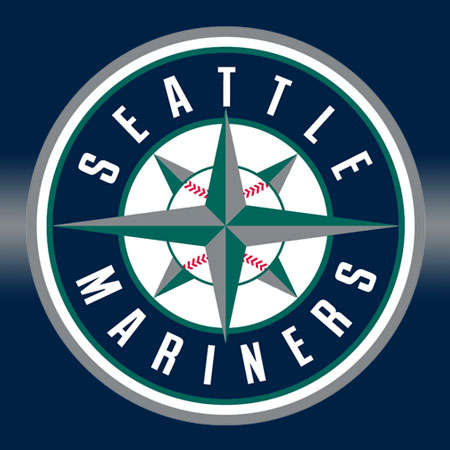Frequent flier miles

As part of the collective bargaining agreement adopted by Major League Baseball and its players' union earlier this year, a number of changes (mostly unwelcome) have come to the game this season and more are coming next year. The most egregious of these, of course, is the "universal designated hitter" rule that began this season, which is a crime against the sport. Other heinous changes include advertising on uniforms, which will either begin this postseason or next season; expanded playoffs, which we will see in a little over a month; and a tripling of the number of games devoted to Interleague-play, starting next year.
That last point became less abstract today when MLB released its tentative schedules for 2023. The new formula has teams playing clubs in their own division 13 times each (down from 19) and clubs from the other two same-league divisions six or seven times each (roughly the same as now), with the remainder of the schedule devoted to Interleague—teams will play every team in the other league three times, four in the case of its so-called "rival team." (One issue I can't figure—why 13 per intradivision team? Make it 14, take the those four games out of the same-league interdivision mix, which has seven games against four teams and six against the other six; make it equitable all around. That wrinkle is just dumb.)
As a concept, I don't object to this, at least not any more than I object to Interleague play generally; I preferred it when the leagues were contained unto themselves and only met at the All-Star Game and the World Series. Since it came into existence in 1997—as a gimmick to sell more tickets in the wake of the disastrous work stoppage of 1994, which itself was supposed to be the first year of expanded playoffs that were designed to be a gimmick to sell more tickets—it had been limited to 15-20 games ostensibly limited to a single division; greed got in the way of fairness, of course, and over the years it was tweaked to give extra games against opposite-league teams that sold more tickets in the major markets. The new norm of 46 Interleague games is much more suitably apportioned, with only one Interleague game differing from team to team; the current setup has been absurd when looked at in terms of competitive fairness for winning a title, so in a lot of ways the new system will be better.
Still rankles me a little, though.
Being a more-or-less traditionalist when it comes to baseball, I am sad to see the death of the two separate and distinct major leagues. Really, that kicked in this year with the metastisization of the DH cancer to the National League, but the new schedule just underlines the point. The American and National Leagues are mere labels now, the slow merger into one entity (which began in the '90s) is complete. So that's one thing.
The other issue I have is how it affects my hometown Seattle Mariners.
Just by nature of geography, the Mariners already travel a lot more than most teams do. Occasionally a schedule will have the Oakland A's or the Not-Really-Los-Angeles-You-Don't-Fool-Me-I-Know-You-Play-in-Orange-County Angels traveling more miles over the course of the year, but usually it's the M's. Seattle is an isolated outpost far from every other team's home, it figures they'd have the biggest travel burden. So I was concerned that the new normal would eliminate road trips to California and Texas in favor of more east-coast trips, and adding even more travel to the already well-traveled Mariners could be detrimental. But that's not going to be the case.
Looking at the ’23 draft schedule I see the number of road trips remains the same at 11. The M's make five trips to the Eastern time zone (one of which is Cleveland after Chicago then home, not bad; another ends with a stopover in Oakland on the way home, which isn't great but is probably better than shoehorning that Oakland stop in elsewhere) and six to the Central, most of which are paired with Pacific Time stops on one end or the other. And there are no instances of backtracking weirdness like they had in 2019, when they had trips that went Seattle-Anaheim-Minneapolis-Oakland-Seattle and Seattle-Dallas/Ft. Worth-Chicago-Houston-Seattle. The closest one to something like that in the ’23 grid is Seattle-Kansas City-Houston-Chicago-Seattle, which seems not as dumb/wasteful. Otherwise, all of the trips make geographic sense; ideally, of course, you would pair the visit to Phoenix with a stop in San Diego or Anaheim instead of Minneapolis (July 24-30), play in San Francisco back-to-back with a stop in Oakland, and get the Rangers and Astros on one jaunt. But it's a mess getting every date to fall into place with 30 teams, so I guess this is OK.

All told, we get a season sum of 49,007 miles flown. More than this year's just-over 47,000 and last year's 48,400, but not as bad as I thought it'd be. In 2014, the Mariners' schedule had them flying 51,500 miles; I figured it would be that every year now. Glad to be wrong.
One other good thing: despite the news media calling it a "balanced schedule," it remains division-weighted, which I consider a necessity. For a while there, MLB used an actual balanced schedule (mostly) which made standings in a division artificial. At least this plan continues to make it meaningful to be a division champ. Now, if we could just get Commissioner Manfred and company to change the stupid new playoff format that lumps a division winner in with Wild Card teams to one that respects the division flag...



Comments
Posted by Mark Russell on August 25, 2022 (21 months ago)
Like you, I am--mostly--a traditionalist when it comes to baseball. The pitch clock is the most egregious change coming IMO, and has my group considering cancelling the ticket package we've held since 1996.
No comments yet.
Add your comment
RSS feed for comments on this page
RSS feed for all comments